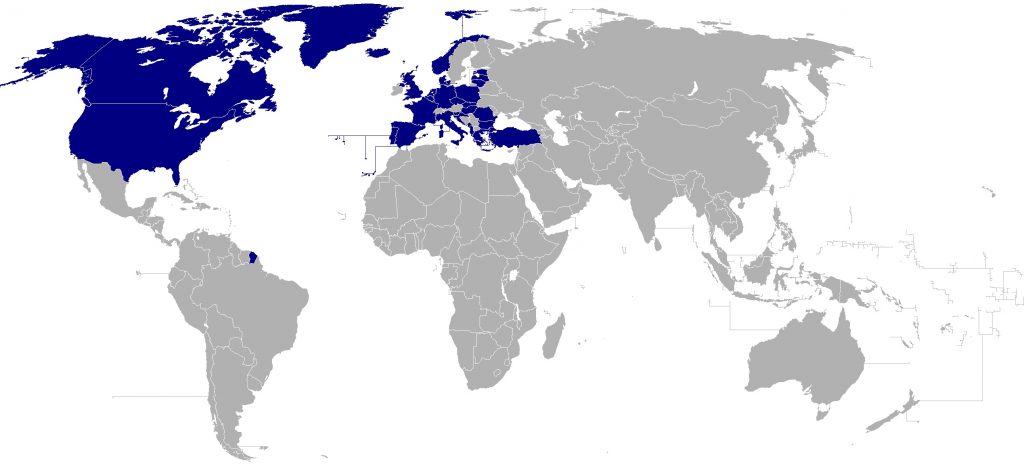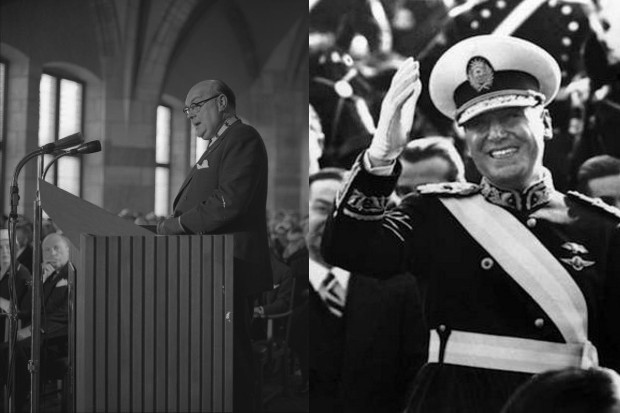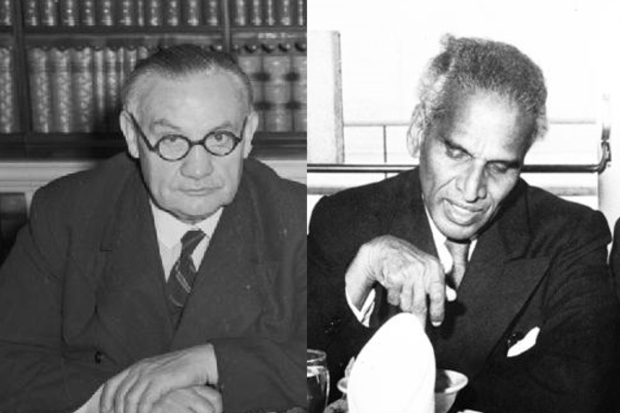
5 years ago, we marked the 65th birthday of NATO with a What’s the Context blog: What’s the context? 4 April 1949: signature of the North Atlantic Treaty
Today, NATO is 70, its membership at 29. In recent years NATO’s remit and solidarity has been adapted, confirmed, extended and questioned, but for most members it remains the essential bedrock of Western security. The Cold War is long over, but some East-West tensions persist, and NATO plays a key role elsewhere, for example in Afghanistan.
Yet when we look round the world in 2019, other regions loom large on the global security landscape: for example, Latin America, Africa, and the Asia-Pacific including China. On NATO’s 70th birthday, it is interesting to note whether and how those regions figured in the context of the negotiations leading up to the signature of the North Atlantic Treaty in 1949.
Latin America
The NATO Treaty was based partly on the Rio Treaty (Inter-American Treaty of Reciprocal Assistance), signed on 2 September 1947 by 19 states including the USA.[i] The central principle was that an attack on any member would be taken as an attack on all (though a 2/3 majority was required for action to be taken, and each state could decide what to do). Argentina wanted this to apply only to aggression by non-American states, but others, suspicious of the intentions of President Peron, resisted this.
The Rio Treaty came into force on 3 February 1948, and two days later Belgian Prime Minister Spaak suggested to Hector McNeil, Foreign Office Minister of State, that a similar pact would be attractive to the US and help draw them into guaranteeing Western European security. They agreed that any agreement would need to provide for more rapid action, unanimously and more precisely defined, but that Rio was a good precedent to follow.[ii]

Africa
A number of prospective NATO members, including Britain, still had African colonies while the North Atlantic Treaty was being negotiated. Ernest Bevin thought if Western European countries could mobilise their colonial resources in support of a security pact, overall population and production capacity could counterbalance the Soviet bloc.[iii] But US policy was resolutely anti-imperialist and any reference to colonies threatened to jeopardise American support for mutual defence arrangements. Nor did the Americans want to guarantee the security of European territories on the African mainland: after all, they said, they did not plan to include Hawaii.
On the other hand, the US was interested in strategic raw materials in Africa, and in establishing American bases in others’ colonial territories. Western European countries argued amongst themselves about including each other’s African territories in scope of NATO. There was an enduring tone of 19th century imperialism in the debate. But the African Conference in London in September 1948 foreshadowed a new role for emerging states in a changing world, making references to Africa in the NATO discussions ultimately anachronistic.
Asia-Pacific
All prospective NATO members were worried about the spread of Communism in the Asia-Pacific region. At the beginning of 1949 Communist domination of China was almost complete, though Mao Tse-tung’s relationship with Moscow was a subject of speculation in the West. Korea and South-East Asian colonial possessions were threatened, while Britain worried about Hong Kong.
The future of British commercial interests in the region was uncertain. The US still controlled Japan, now regarding it as less as a security threat than as potential help against the USSR. Australia and New Zealand, though not included in NATO’s scope, worried about Japan and felt Western obsession with the Russian threat prevented any Asian-Pacific settlement. In December 1948 the Cabinet authorised Bevin to consult with the US on extending the same mutual defence measures envisaged for Europe to the Far East.[iv] But ministers knew that in reality nothing other than political warfare—anti-Communist propaganda—was practicable. Though nominally supporting the Chinese nationalists, the US took the view that they were not there to bail out failing states and reward poor leadership.
Indian Foreign Minister Menon commented that if Western powers were so afraid of Communism in Asia they did ‘nothing more to check it than go on calling it a bogey and helping weaklings and puppets to fight nationalism’, Communism would flourish. [v] Though his criticisms were deliberately pointed, they rightly underscored a lack of understanding in the West of the true extent of profound change in the region. References to the Asia-Pacific and the need for a concerted Western policy are threaded through the documentation leading up to the signature of the North Atlantic Treaty, but tackling security in the region was a longer-term problem.

The threat to Western civilisation
When Bevin wrote in March 1948 that ‘physical control of the Eurasian land mass and eventual control of the whole World Island is what the Politburo is aiming at’,[i] he reflected profound concern at the polarisation of Europe and the need for a Western security pact. But as he and his colleagues in Washington and Western European capitals negotiated what became the North Atlantic Treaty, they talked about regions like Latin America, Africa and the Asia-Pacific using a pre-war frame of reference.
Despite an acceptance that the days of Empire were numbered, individual countries in those regions were regarded as passive, rather than active pieces on the global chessboard. While celebrating NATO’s birthday, the wider global context of its establishment is worth remembering.
- if you are interested in our work then feel free to read our blogs on GOV.UK
- keep tabs on the past. Sign up for our email alerts
- follow our Foreign & Commonwealth Historians on Twitter @FCOHistorians
[i] Foreign Relations of the United States, 1947, Vol. VIII.
[ii] Documents on British Policy Overseas (DBPO), Series I, Vol. X, No. 27.
[iii] DBPO, Series I, Vol. X, No. 11.
[v] DBPO, Series I, Vol. VIII, No. 56.
[vi] DBPO, Series I, Vol. X, No. 54.